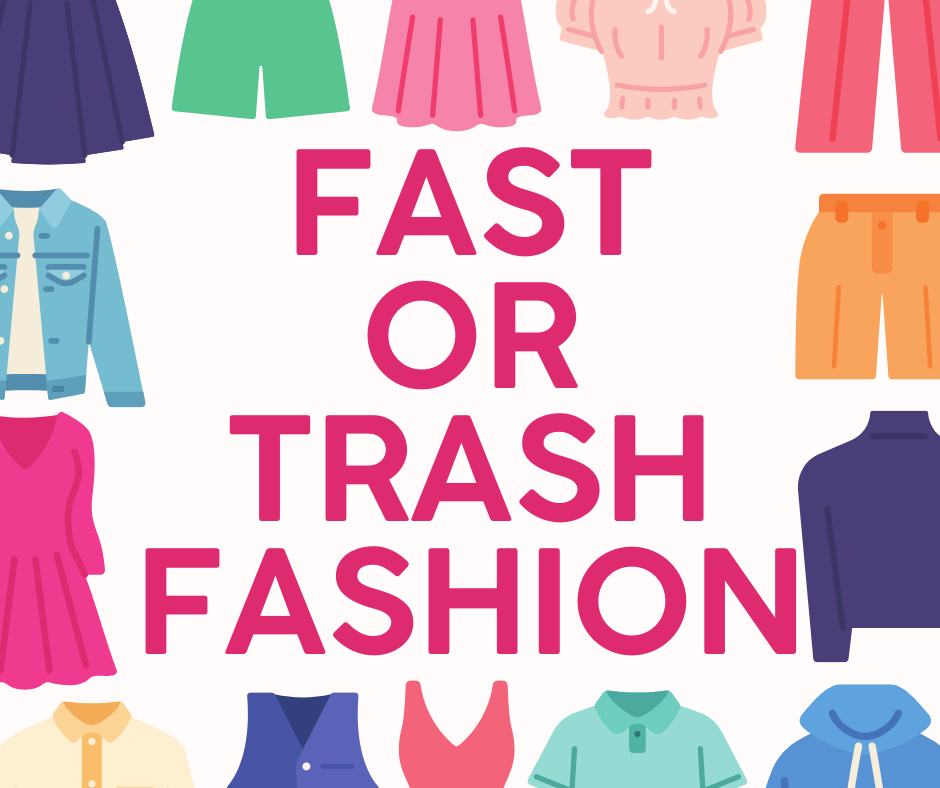While some people appreciate how affordable fast fashion is, is it really that good?
According to an article written by Britannica fast fashion is “a term describing the rapid production of inexpensive, low-quality clothing that often mimics popular styles of fashion labels, big-name brands, and independent designers.”
So yes, fast fashion is affordable to the everyday buyer, but it is not the best quality. Since the production of these clothes is done with enough speed to keep up with the newest trends, good quality products are not ensured. This can be seen with the fabric that is used, which is commonly polyester, or the stitching that’s done, that frequently comes undone.
People appreciate the deal that fast fashion gives them and that they are able to buy clothing for relatively cheap, but no one ever asks how that is possible. Though there are a couple reasons, one of the biggest is that workers in fast fashion are not paid adequately and are treated poorly. Britannica explained that many workers have 16 hour work days and face retaliation if they refuse to do overtime. They also are forced to work in unsafe conditions like “windowless spaces, dangerously high temperatures, violent managers, and harmful chemical exposure.”
Fast Fashion also has a significant impact on the environment and it is not a positive one.
According to Britannica, “The fashion industry as a whole is responsible for 10 percent of carbon emissions, uses large quantities of water, and employs dyes and chemicals that pollute the environment.”
Since fast fashion is created to be cheap, the material that is used is bad quality. This not only leads to the customer being disappointed in their purchase, but also to the clothing will deteriorate quicker. The clothing falling apart often leads to the purchase of a replacement which starts the cycle all over. So even though the clothing is cheap, buying it multiple times won’t be cheap.
Participating in fast fashion is not worth it. The industry is causing damage to the environment, creating poorly made products and allowing unsafe work conditions. Realistically there can not be a way to sell clothing at the low price that fast fashion does without creating these issues. The only solution is to stop fast fashion.
In recent years, the fast fashion industry has come under scrutiny for its fast-paced production, overconsumption, and negative environmental impacts. However, amidst the debate of whether fast fashion is a good option or not, some buyers may suggest that fast fashion isn’t all bad and can yield positive outcomes for consumers.
Fast fashion, characterized by its rapid turnover of trendy clothing at affordable prices, has made fashion attainable to a wider audience. For many, especially young adults and budget-conscious shoppers, this accessibility allows them to express themselves through style without breaking the bank. It also helps plus-size individuals explore their style while finding their size, not having to compromise their style for comfort.
Critics often highlight the environmental aspect of fast fashion, citing issues such as textile waste and carbon emissions. However, strides are being made towards sustainability within the industry, with many brands implementing eco-friendly practices to reduce their environmental footprint.
Within the realm of fast fashion, one of the biggest in the industry is SHEIN, a brand known for its vast selection of trendy and affordable clothing. Despite facing criticism for its rapid production cycle, SHEIN is an affordable and tempting option when it comes to needing a cute, quick outfit. However, the temptation of the low prices does cause many consumers to purchase massive quantities of items from the website, totaling up to hundreds of dollars to make hauls for social media.
Shopping from fast fashion websites in small amounts might not be as harmful as some people believe. However, it is still not the most environmentally friendly choice. If individuals were to use fast fashion in moderation, it would not be as significant of a problem. Nevertheless, overconsumption is the root of the issue.
While fast fashion has its drawbacks, it’s essential to acknowledge both the positive side while also keeping in mind the harmful aspects of it. By having a balanced perspective of fast fashion, people as a whole can work towards a more sustainable and inclusive future for fashion










